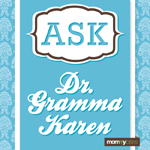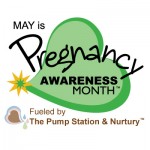
My husband, two young children (ages two and four), and I are now living in a community in which gun ownership and NRA (National Rifle Association) memberships are commonplace. We moved from the East where guns were not as common. Growing up I knew that some families had guns, but I never saw them or knew where they were. Here the gun culture is different in that people’s use of them is prominent and visible — they carry them and shoot them more.
As our children get older and are invited to play dates in homes where there probably are guns, we’re just not sure how to handle this. I understand that owning a gun is every American’s right and that it doesn’t say anything about that person’s moral character. I also want to respect people’s privacy, but it seems hard to do that while asking, “Do you have guns?” “Do you keep them in the home?” “Are they in a locked location?”
I talked with my mom about it and she suggested the focus needs to be on safety, not just gun ownership. I agree with her, but my concern is how to have the “right” conversation about guns in the home that is respectful and honest, doesn’t leave another family feeling judged or offended, and gives us the peace of mind that our children are protected from in-home gun mishaps. I am not sure how to even start this kind of conversation.
Your mom’s focus on safety in general, and not singling out in-home guns, provides a good starting point for the conversations you want to have with other parents as play dates become more frequent in your children’s lives. When your kids are in someone else’s home you need to feel they are safe and secure, but as it turns out, your understandable fear of gun mishaps, as horrific as they are, are not as common an occurrence as we often believe.
Some statistics provided by the Children’s Defense Fund and Washington State Department of Social and Health Services indicate the far-reaching extent of gun ownership and practices, and hence the basis of many parents’ fears.
For example:
- 40% of American households have guns.
- 34% of children in American homes live in homes with at least one firearm.
- In 30% of hand gun-owning homes, the gun was stored unlocked and loaded at the time of the survey.
- 47% of high school kids and 22% of middle school kids said they could get a gun.
- 5,740 children and teens died from gunfire in the United States in 2008 and 2009 (2,947 2008; another 2,793 were killed in 2009).
- Two-thirds were victims of homicide (3,892), one-quarter were suicide (1,548), and five percent were accidental or unknown (300) gun deaths.
As astounding and frightening as these statistics are, a deeper analysis indicates that the chances of your children being victims of at-home gun mishaps are probably much less than most parents assume. In fact, at-home gun accidents involving children between the ages of 1 and 18 are 1% of unintentional deaths. Unintentional deaths or injuries are characterized as events that are predictable and preventable if safety measures are implemented — the safety measures that parents want in place when their children visit another child’s home.
For example, in 2010 there were 11,500 unintentional deaths of children in this country. Here is the breakdown of this number:
- 62% were motor vehicle deaths, due to children not being strapped in, incorrectly harnessed in, or driver is drunk. This means your children’s safety is more at risk when you let another parent drive your children anywhere than if you let them visit in a home where there are guns.
- 12% due to suffocation and strangulation (cords, plastic bags, and swallowed piece of toys).
- 10% due to drowning (pools for older children, bath tubs for younger kids).
- 9% due to poisoning.
- 5% due to fire/burns.
- 1% due to firearms.
According to the Centers for Disease Control and Prevention, National Center for Injury Prevention and Control, 703 children under the age of 15 died in accidental firearms deaths between 2001 and 2010, the latest year for which the agency’s statistics on fatalities are available. During the same period, 7,766 children under the age of 14 suffered accidental firearms injuries — about one injury for every million children.
(A word about these statistics: As pointed out in a recent New York Times article, “Children and Guns: The Hidden Toll”, the reported and published data are probably on the low side.)
Of course, one child dying or being injured in an unintentional accident is one too many, but with these statistics in mind, I want to suggest that initiating your conversations about safety might be easier than perhaps you thought. If you take the lead by saying something along these lines: “Before your child comes to our home to play with my children, I want to assure you that my husband and I share your concerns about our home being safe and secure. To that end, we have taken these measures . . . our pool is fenced in with an alarm, all our cleaning products and medications are in a locked closet, we have caps on all electrical outlets, our window-treatment cords are retractable and out of reach, we have no firearms in our home.”
You get the idea. You start the conversation by stating what you have done to ensure a safe and secure environment for your own children, and an obvious and natural outcome is that all children who come into your home benefit from the measure you have taken. After you’ve gone through your list, the parents with whom you’re talking should speak in turn about safety measures in their home.
If they don’t mention guns, you can ask if they are gun owners; if they are, you can ask what safety measures they’ve taken. If you like what you’re hearing — and not just about firearms, but safety in general — you’ll perhaps be motivated to accept an invitation for your children to play together. If you’re not comfortable with what you’re hearing or you feel you’re not being taken seriously by another parent, you may want to decline that particular play date prospect.
With this approach of using a broad platform of safety, I believe you can find the balance you seek regarding firearms in others’ homes: to be respectful of people’s rights to gun ownership and not seem judgmental, while at the same time finding a way to discuss the safety measures important to you. The other important factor regarding general safety is that you educate your children with some basics “Never’s.” For example:
- Never ride in a car without a safety harness.
- Never enter a pool area without an adult.
- Never put anything in your mouth if you don’t know what it is.
- Never touch a gun without our permission, i.e., permission of the child’s parents.
I hope these suggestions help you initiate the important conversations about safety you want to have with other parents.
Ask Dr. Gramma Karen is published every other Tuesday.
E-mail queries to [email protected]
Visit www.AskDrGrammaKaren.com to learn about her new book, Ask Dr. Gramma Karen: Helping Young Parents and Grandparents Deal with Thorny Issues
Like what you read? Sign up for our free newsletter so you can be informed of the latest FREE webinars & teleclasses, parenting articles, & weekly raffles.
The views and opinions expressed on this blog are purely the blog contributor’s. Any product claim, statistic, quote or other representation about a product or service should be verified with the manufacturer or provider. Writers may have conflicts of interest, and their opinions are their own.



